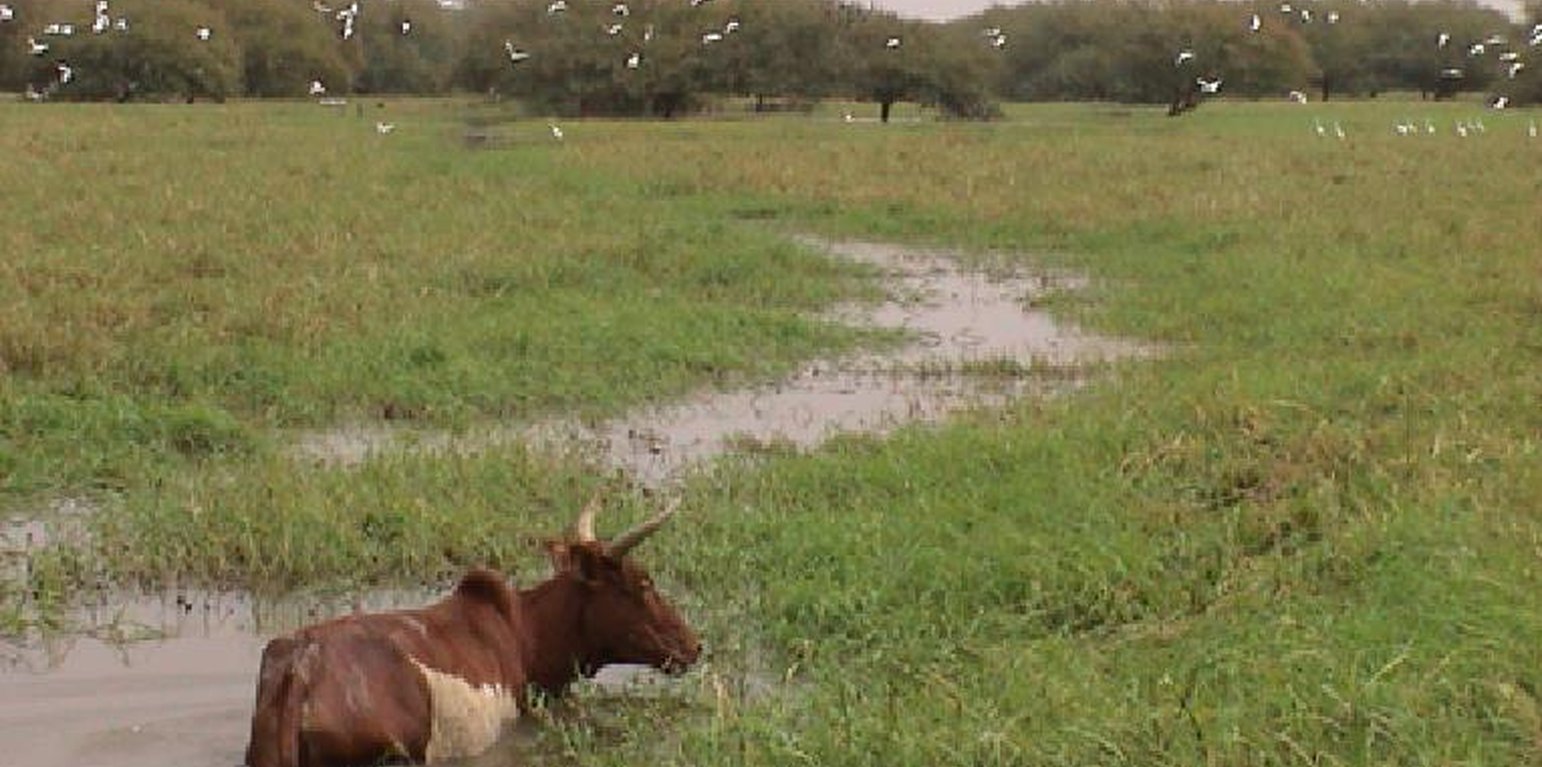



Bourgou (Echinochloa stagnina) is an essential food for livestock in the Niger River’s inland delta region. Given the lack of forage and pastureland for livestock, farmers have taken to replanting and cultivating bourgou in order to improve the availability of forage for animals.
This activity focuses on several objectives, namely: increasing forage production by regenerating bourgou; restoring the environment and biodiversity around lakes and ponds; improving the diet and reproduction of local livestock; producing plant extracts for beverage making; increasing producers’ incomes; extending bourgou growing into the Niger River’s inland delta.
Bourgou pastures can produce up to 3,101 tonnes of dry matter per hectare in the first year. The pastures can support between 782 and 885 tropical livestock units from the March to June period. Fauna and flora (biodiversity) reappear. A cow feeding on green bourgou gives milk all year round and a cow that has spent a season in a bourgou pasture produces one calf per year. Steamed and macerated bourgou stalks produce a highly prized sweet juice. Bourgou seed is
incorporated into human diets. Bourgou helps to increase incomes.
The regeneration activities are carried out under the supervision of the Korientzé forestry officer and the local SADeF facilitator. Regeneration is possible from the month of January and can be carried out as soon as the waters recede. The regeneration techniques used are the layering and transplanting of bourgou cuttings or divisions.
The access of animals to growing sites is regulated and reserved for working oxen, calves, dairy cattle, sheep, goats, donkeys and horses. Cow, horse and donkey access costs 500 CFA francs per head, while other animals are charged at 250 CFA francs per head. A 15% share of the earnings is paid to the Korombana commune authority for the benefit of the community. The remaining funds are allocated to areas that contribute to developing the cooperative’s activities.
The commune authority plays an institutional support role, making officers available to the cooperative. Furthermore, it oversees the correct application of the local agreement on managing bourgou pastures. The Deputy Prefect, through the commune authority, makes security officers and technical service officers available to the cooperative. A rotation system is adopted for farming plots.
The project team provides funding and training. The cooperative implements the regulations and participates in works, management and farming.
The main beneficiaries are the 200 members of the organisation and other livestock farmers from the villages of Korientzé, Bagui and Kéra. An area totalling 310 hectares has been regenerated.
Regenerating bourgou by directly sowing seed goes back to the 1970s. However, regeneration using cuttings began in 1984 with the development of a demonstration plot. From 1999, the Near East Foundation (NEF) became interested in the activity, going on to provide financial support for the Korombana livestock farmers’ cooperative.
Location: Gouloumbo, Korientzé, Kéra, Mousocouraré, M’Bessana, Tiécouraré, Sangui, Mali, Mali
No. of Technology sites analysed:
Spread of the Technology: evenly spread over an area (3.1 km²)
In a permanently protected area?:
Date of implementation: 10-50 years ago
Type of introduction




| Specify input | Unit | Quantity | Costs per Unit (CFA Franc) | Total costs per input (CFA Franc) | % of costs borne by land users |
| Other | |||||
| Total construction | ha | 1.0 | 138.0 | 138.0 | 100.0 |
| Total costs for establishment of the Technology | 138.0 | ||||
| Total costs for establishment of the Technology in USD | 0.27 | ||||
Bourgou pastures can produce up to 3,101 tonnes of dry matter per hectare in the first year. A cow feeding on green bourgou gives milk all year round and a cow that has spent a season in a bourgou pasture produces one calf per year. Bourgou seed is incorporated into human diets. Bourgou helps to increase incomes.